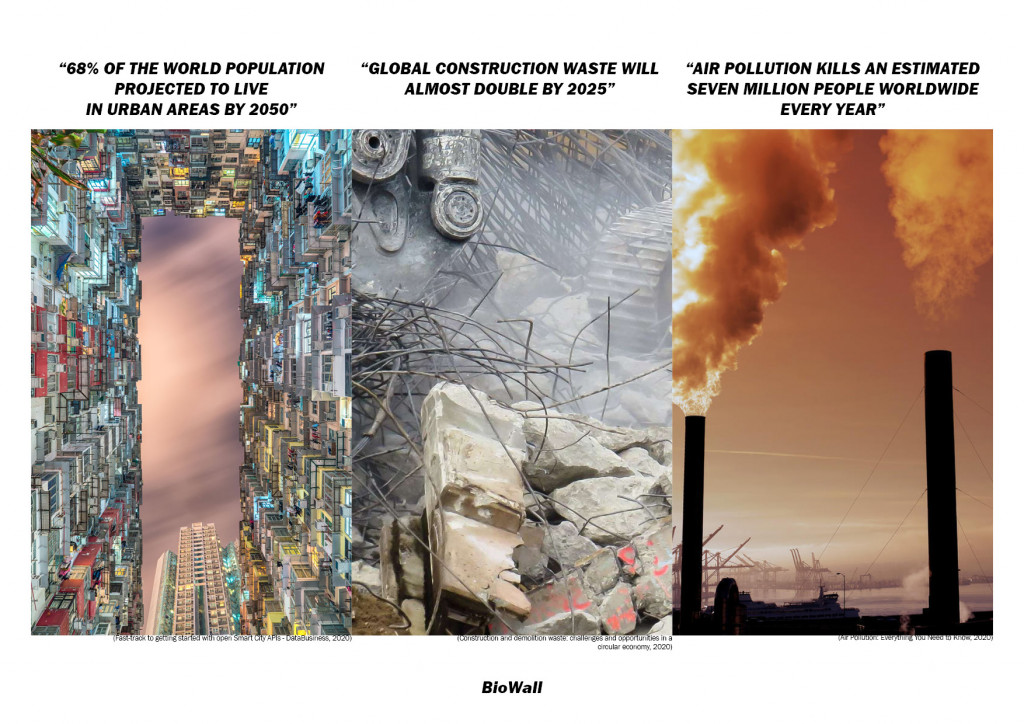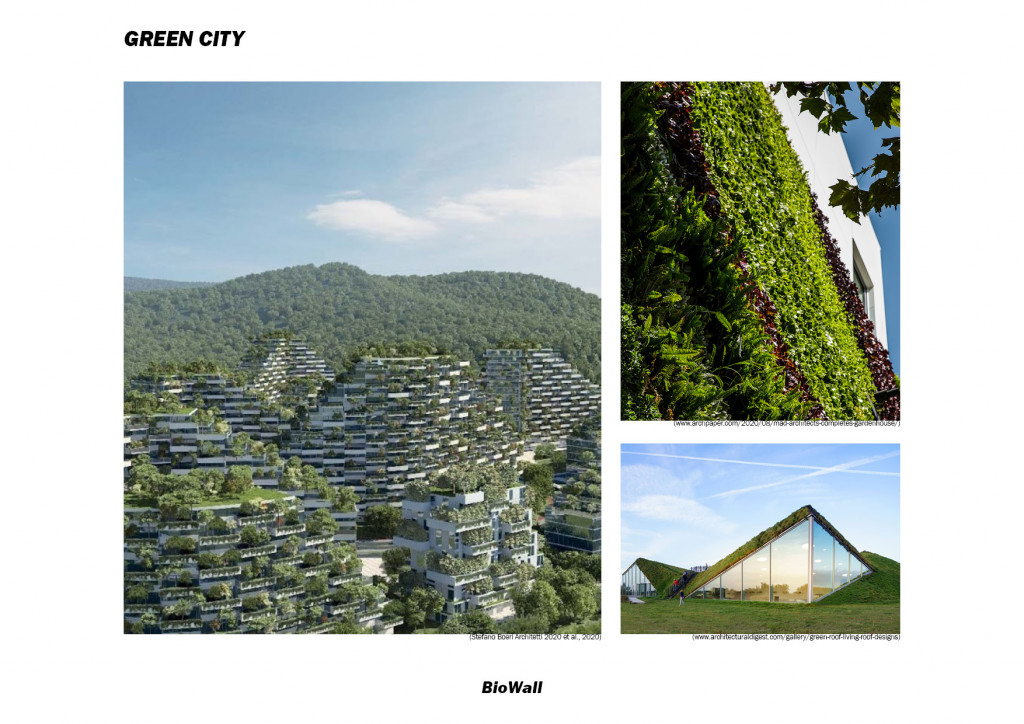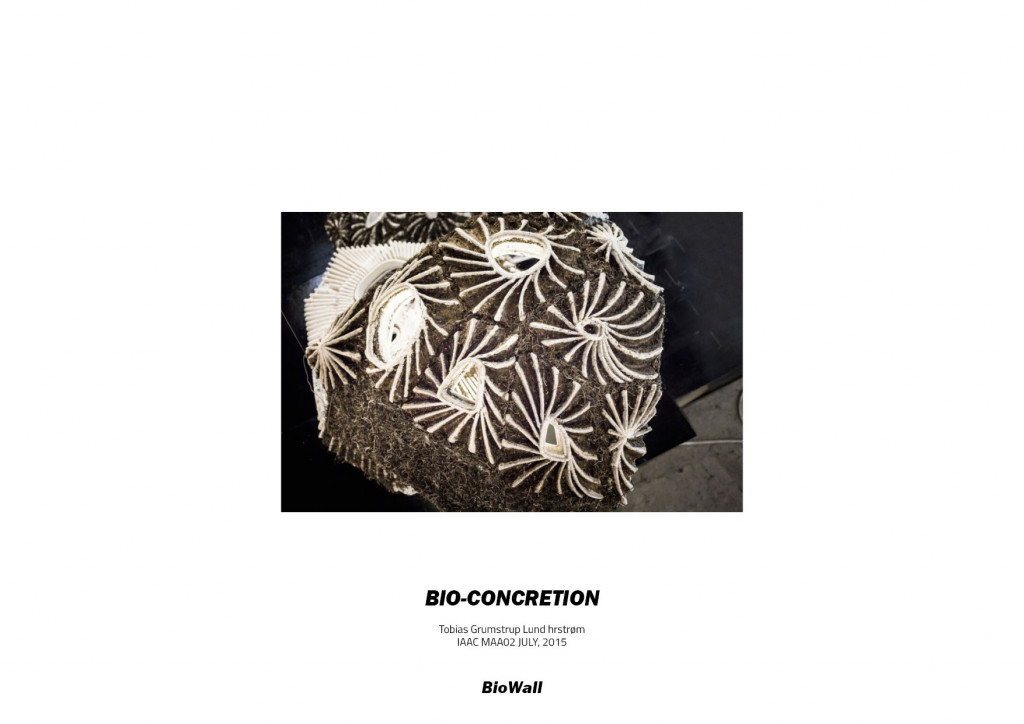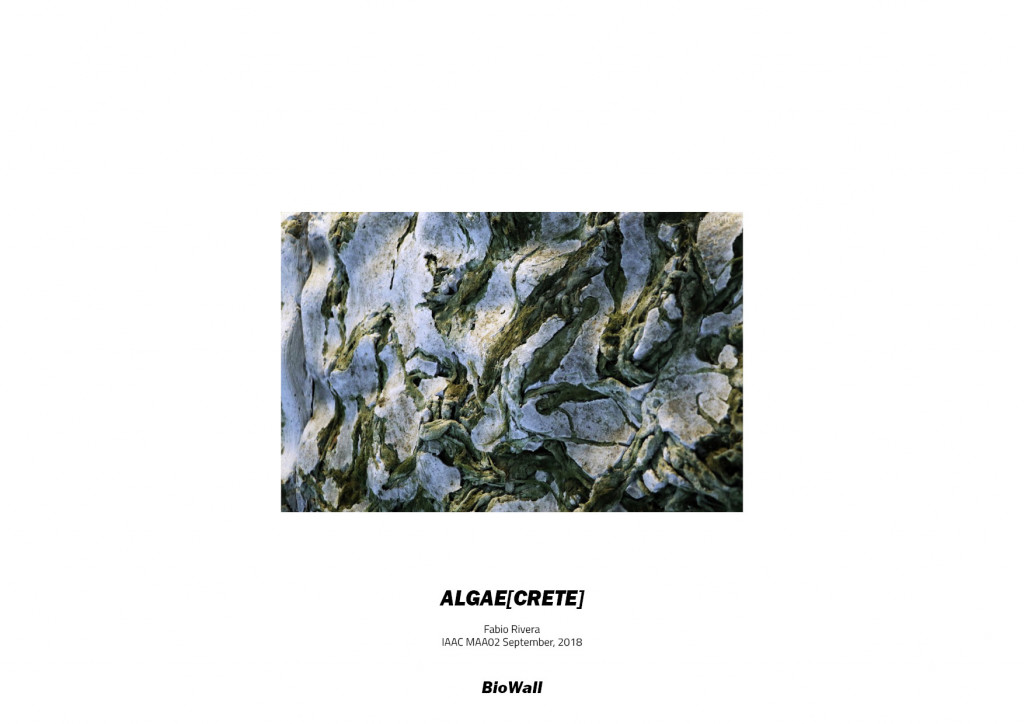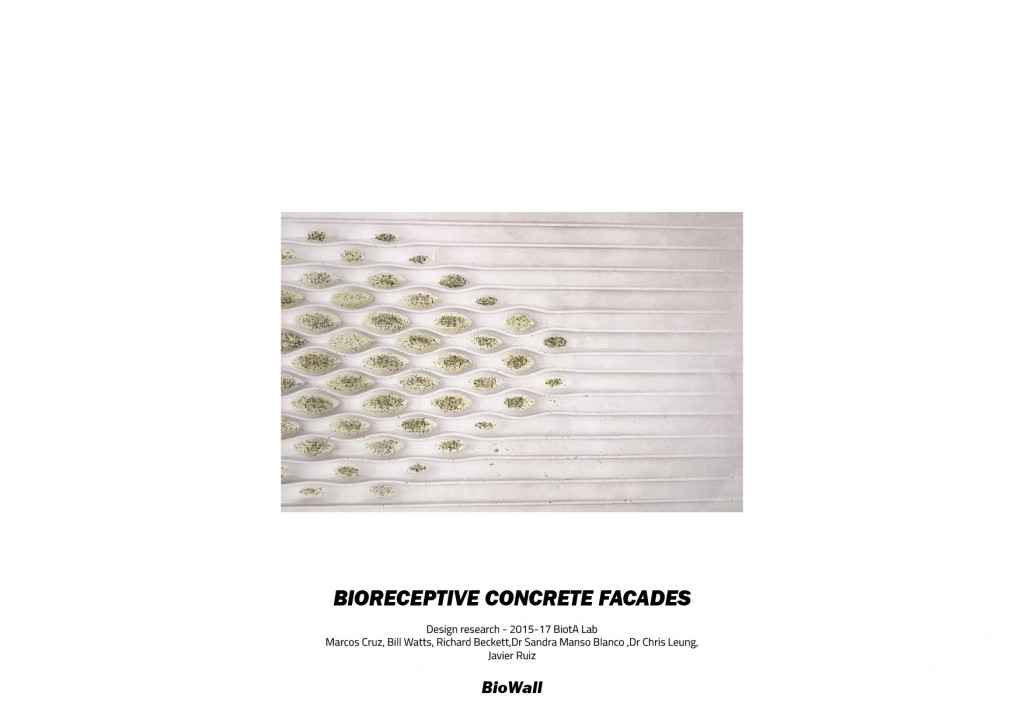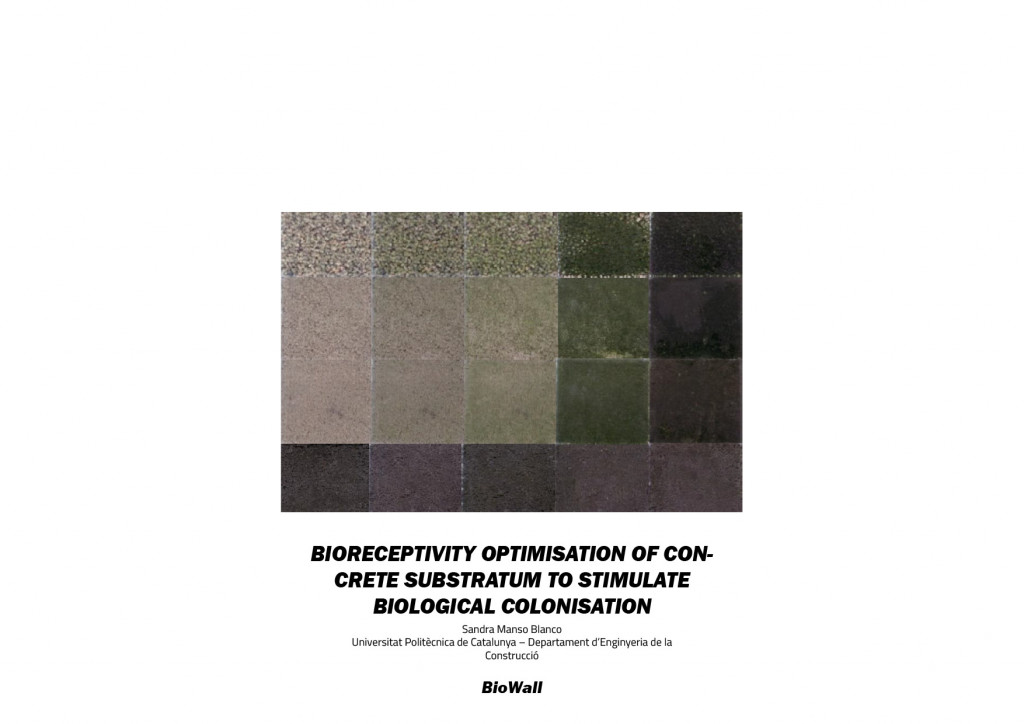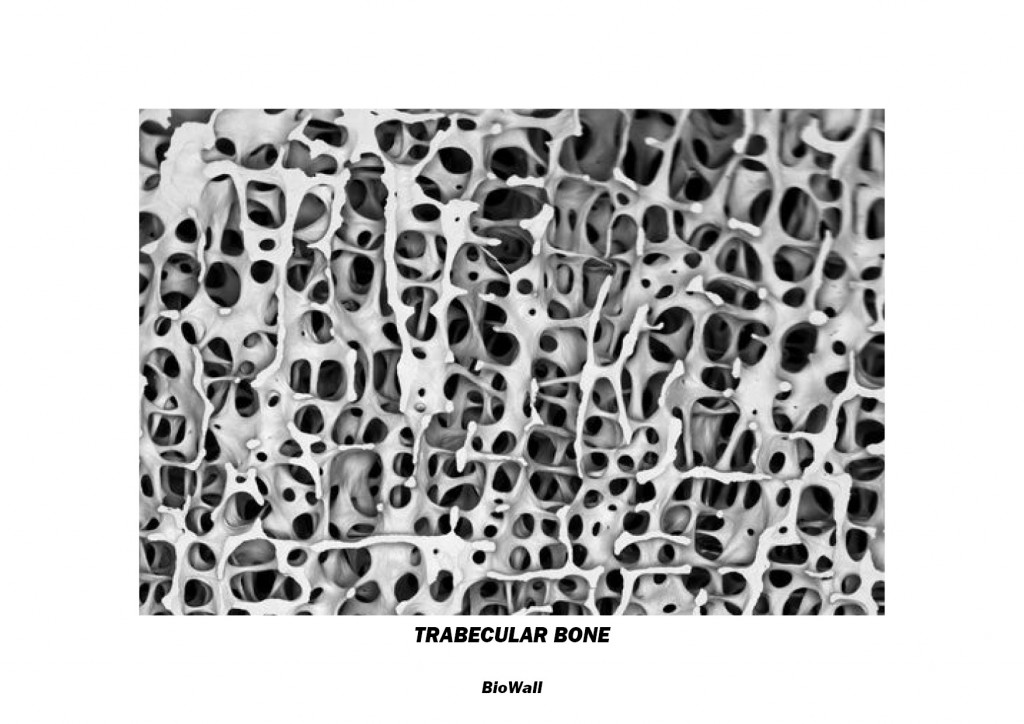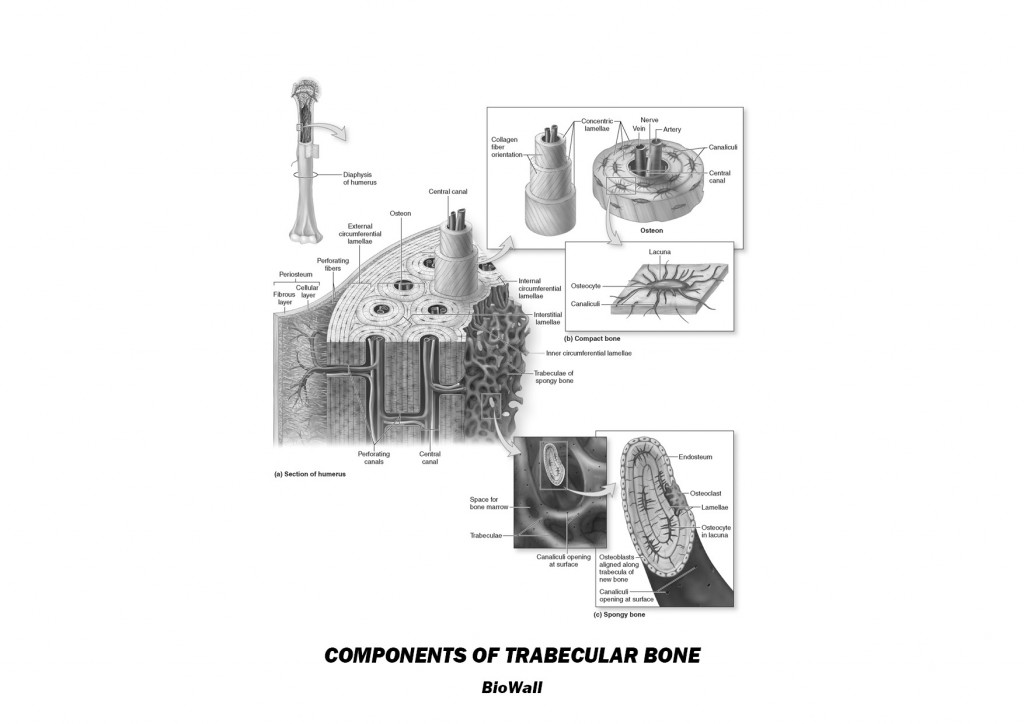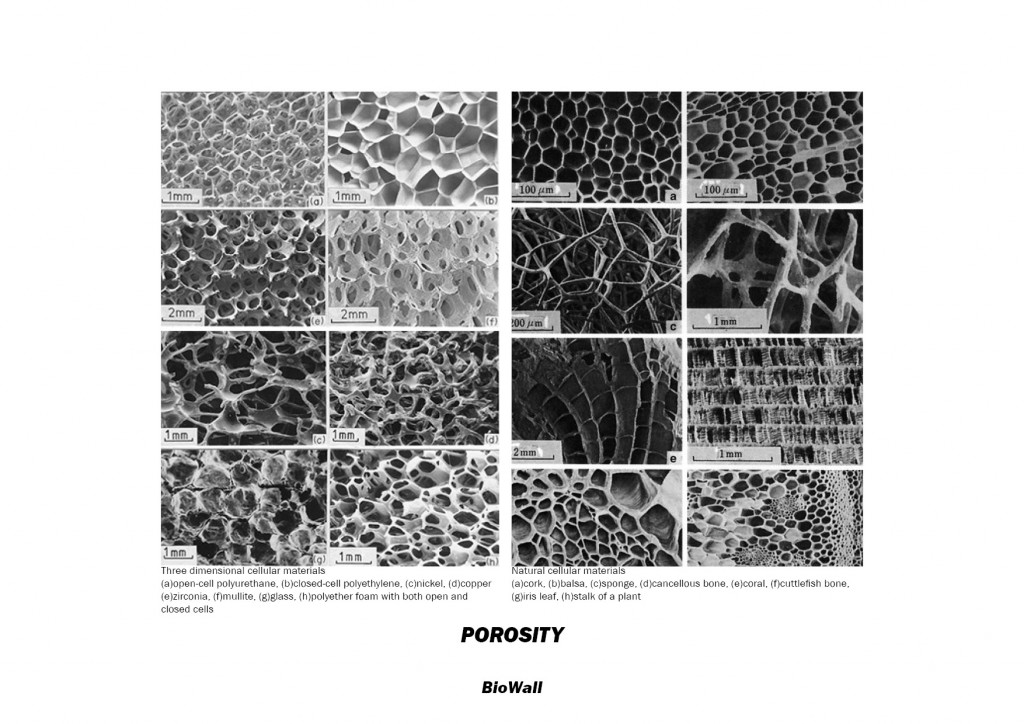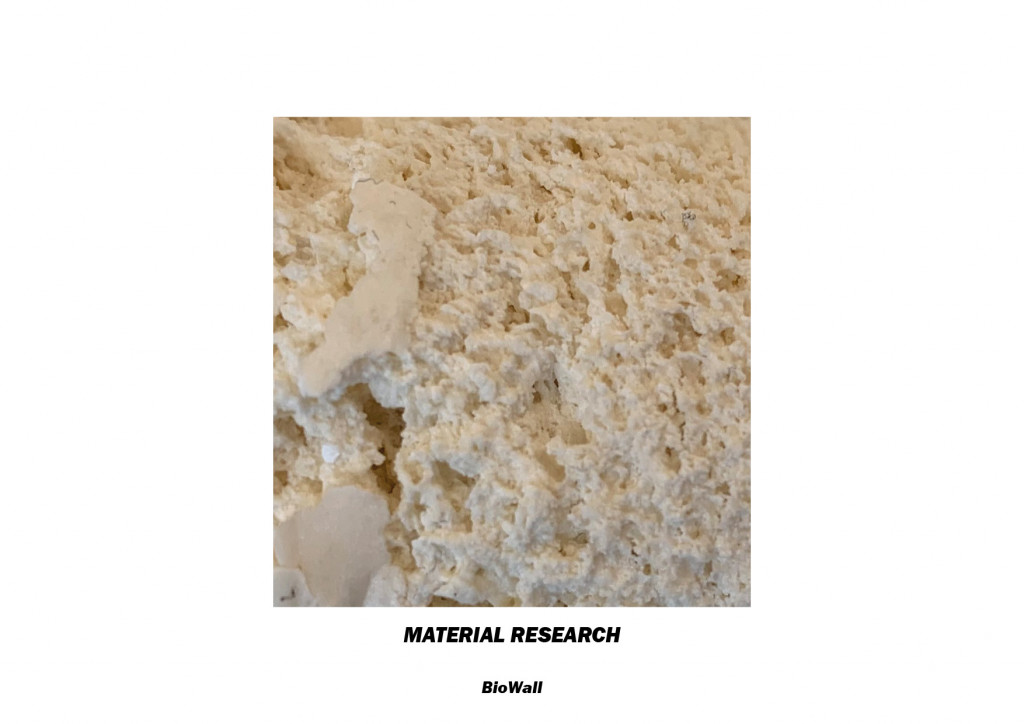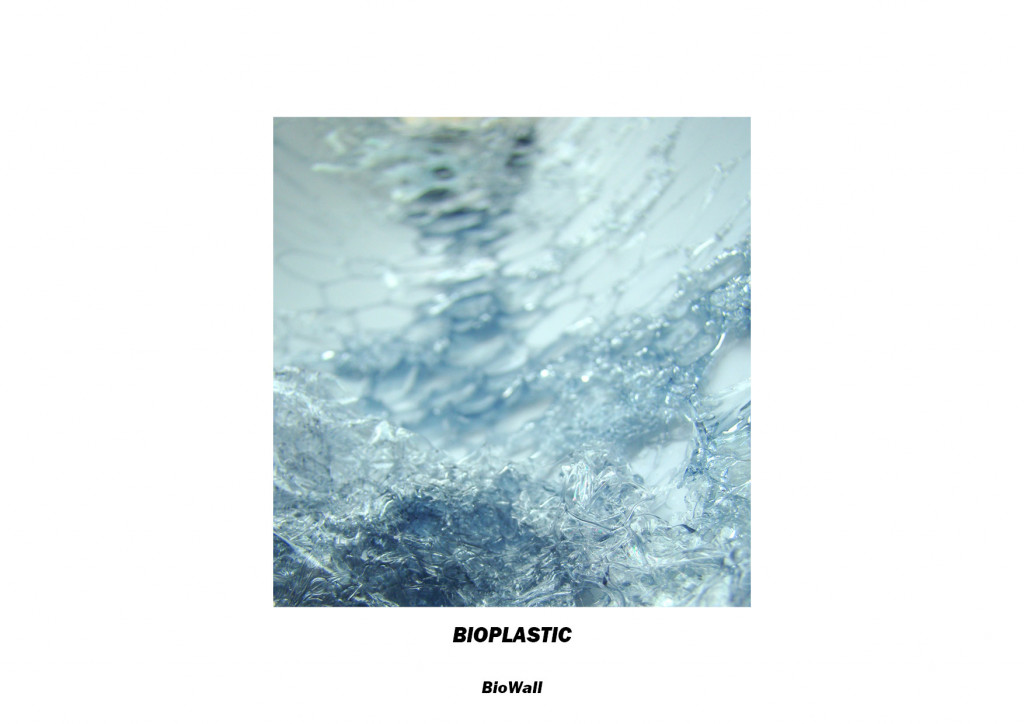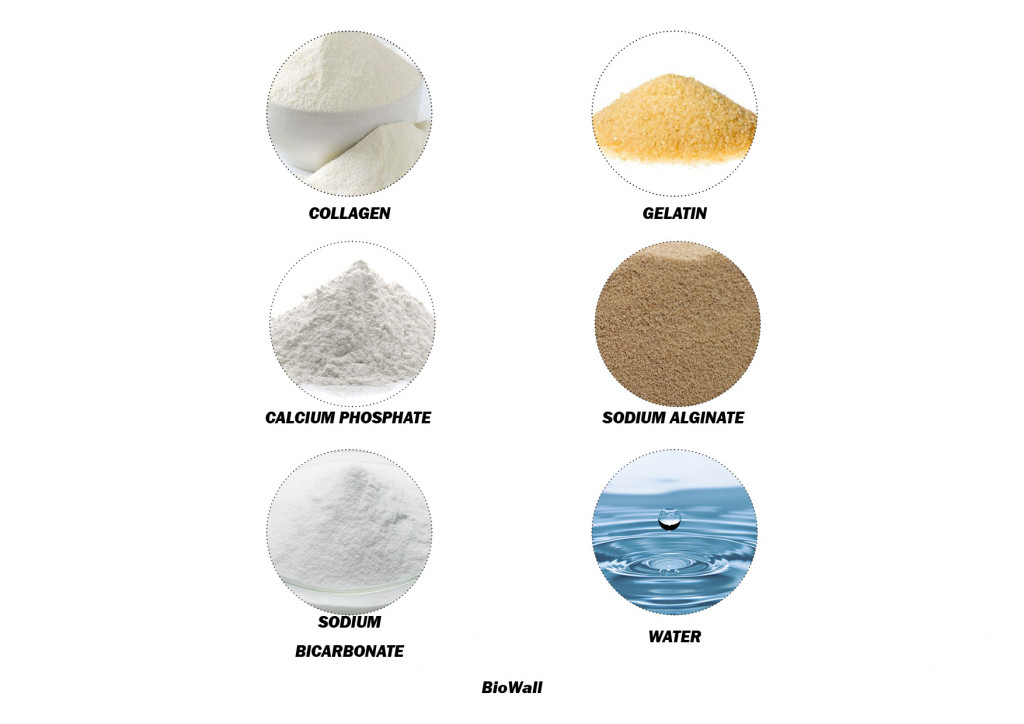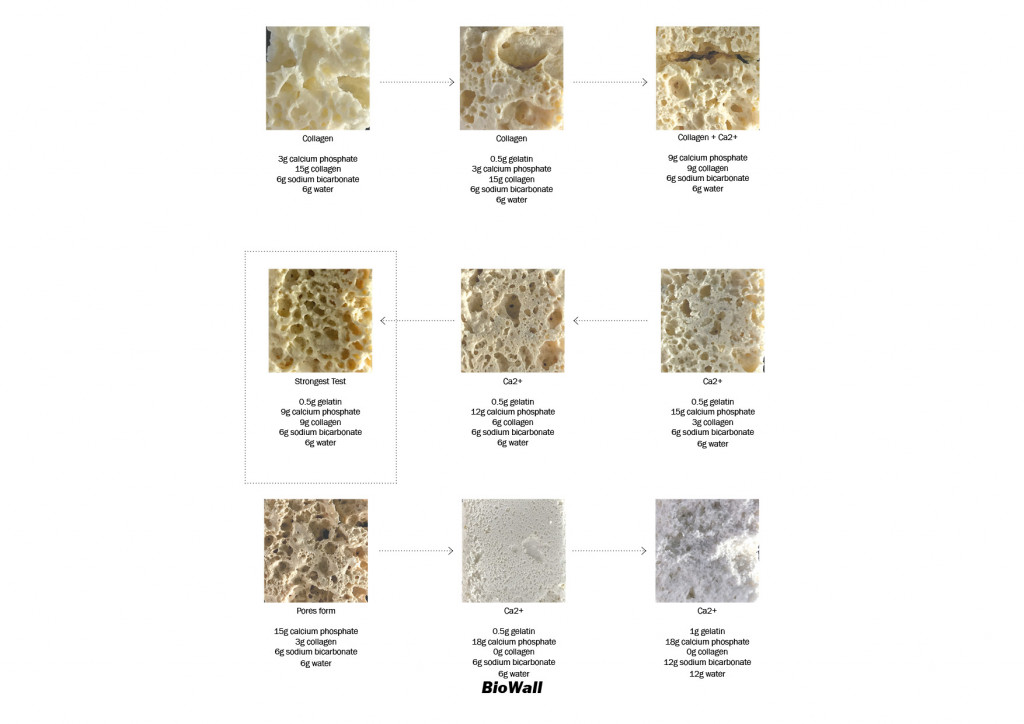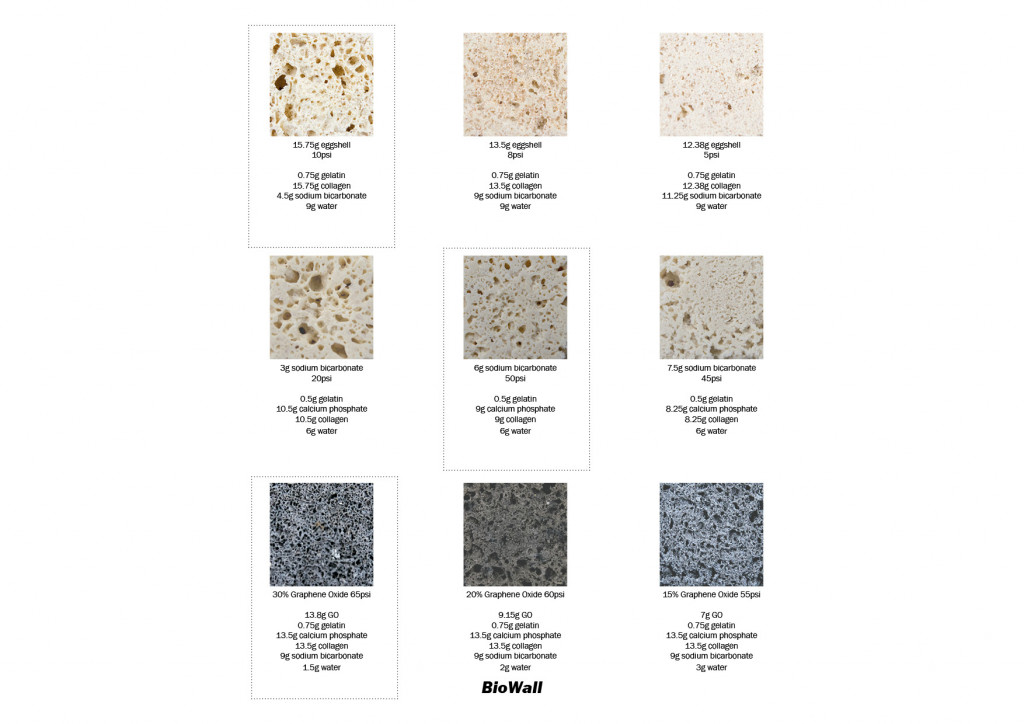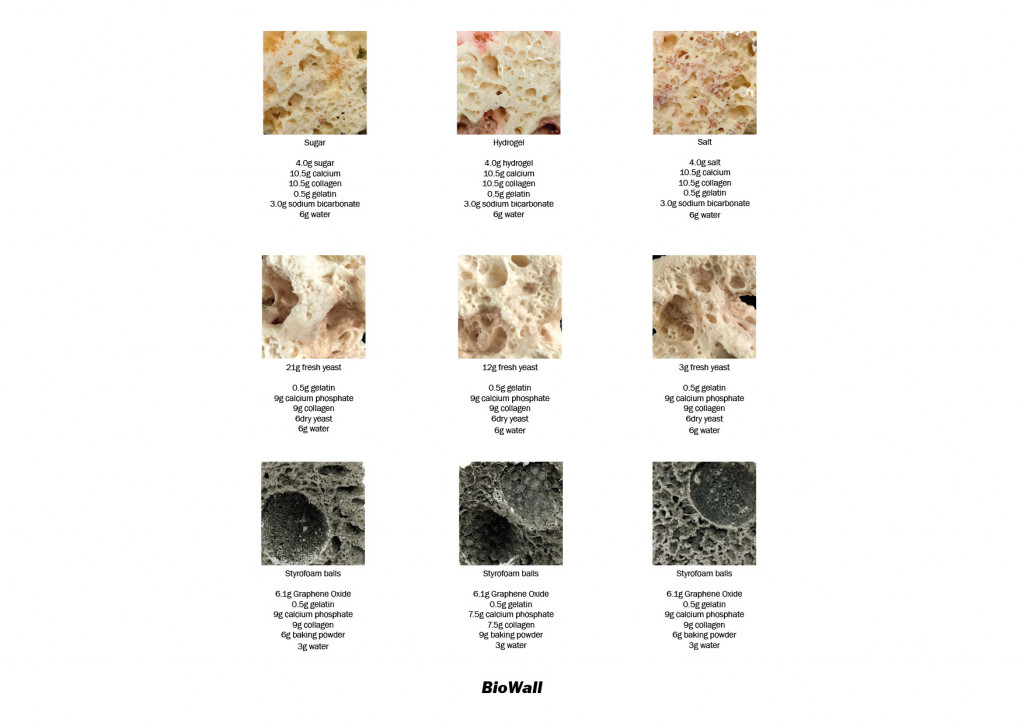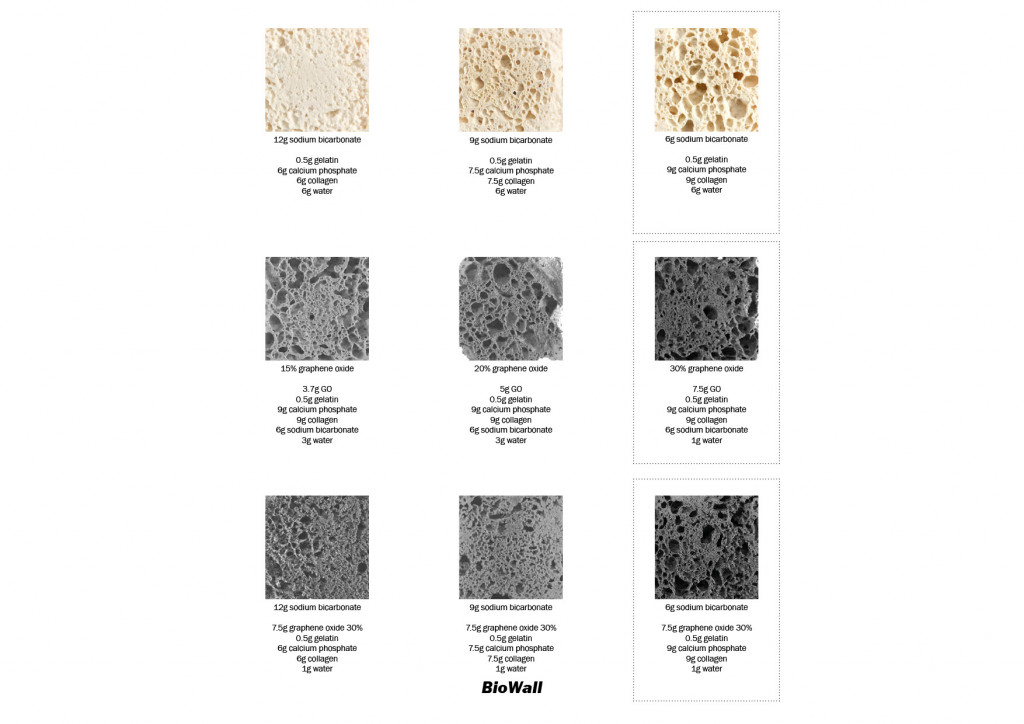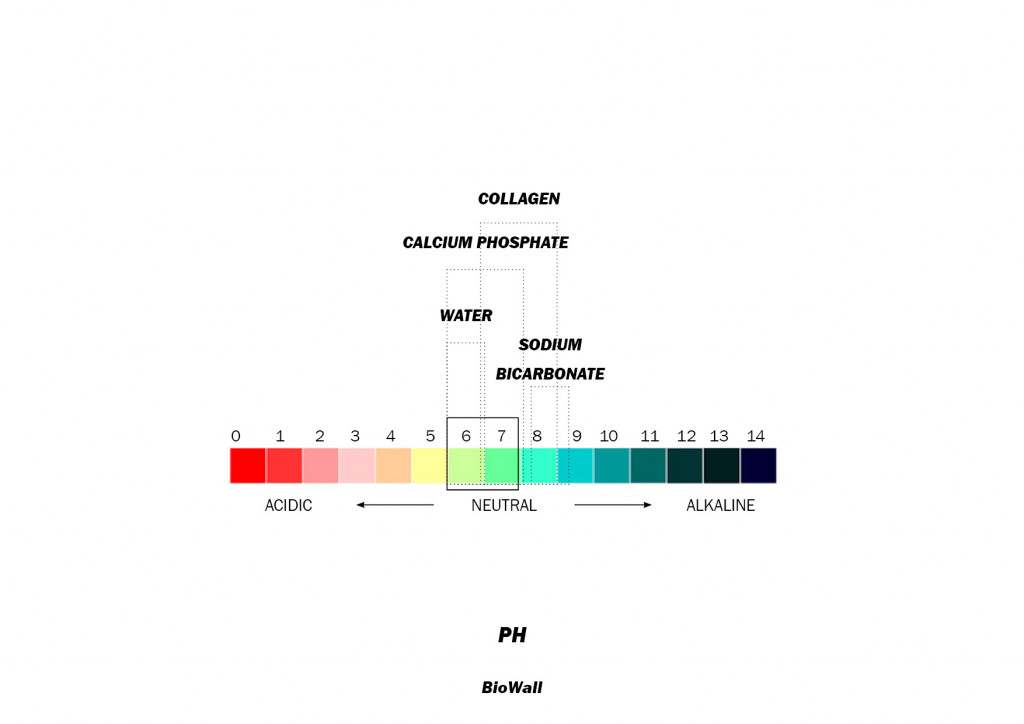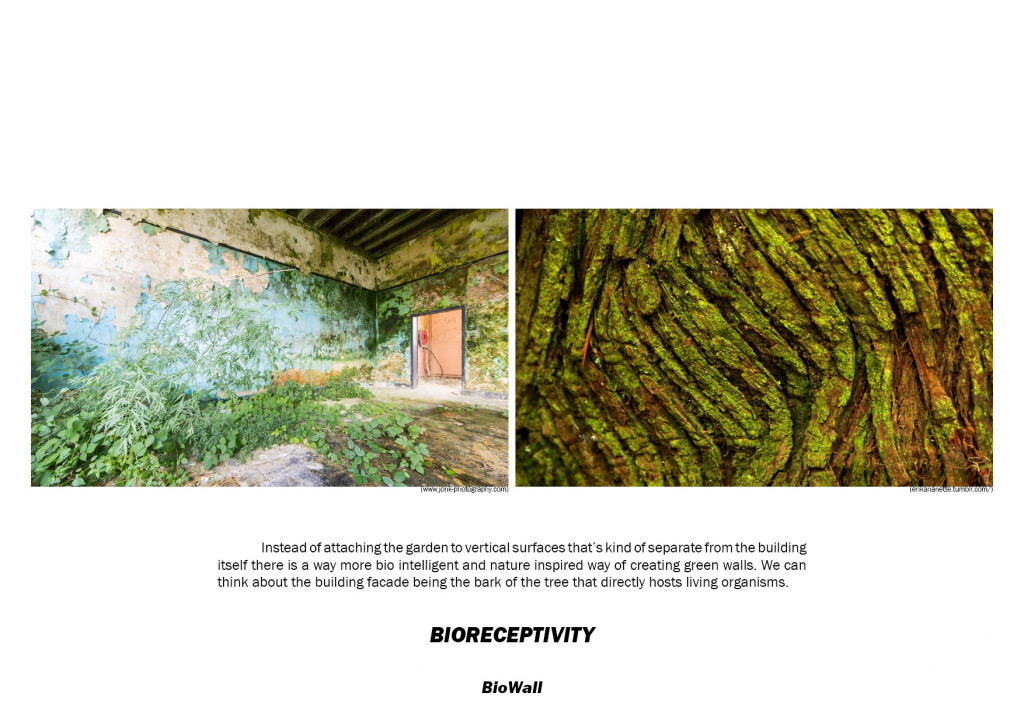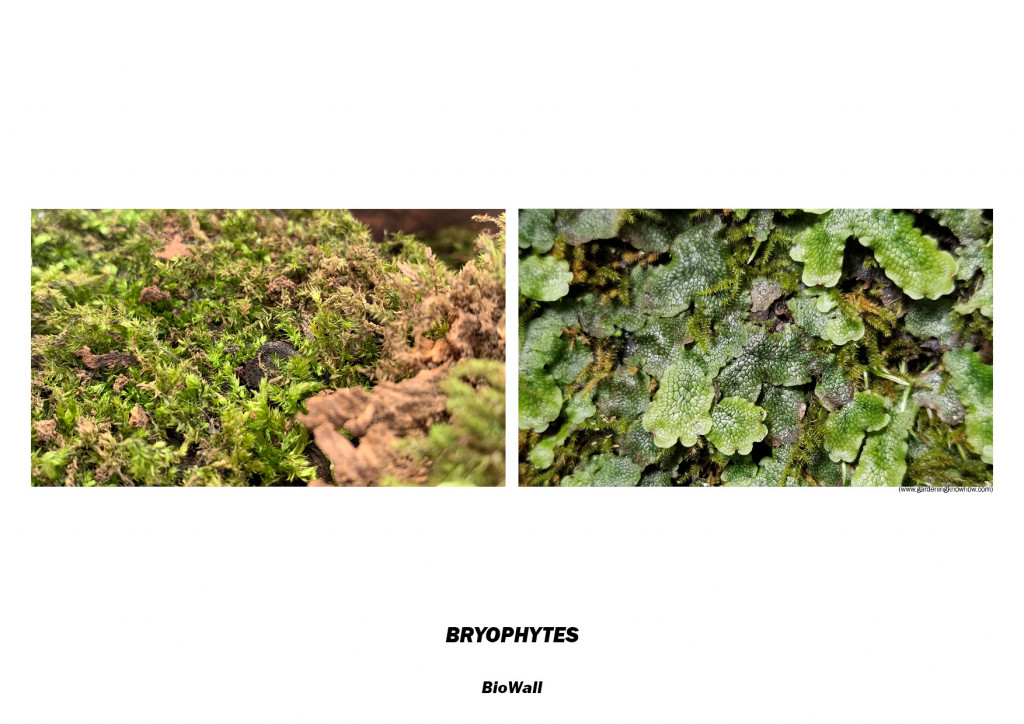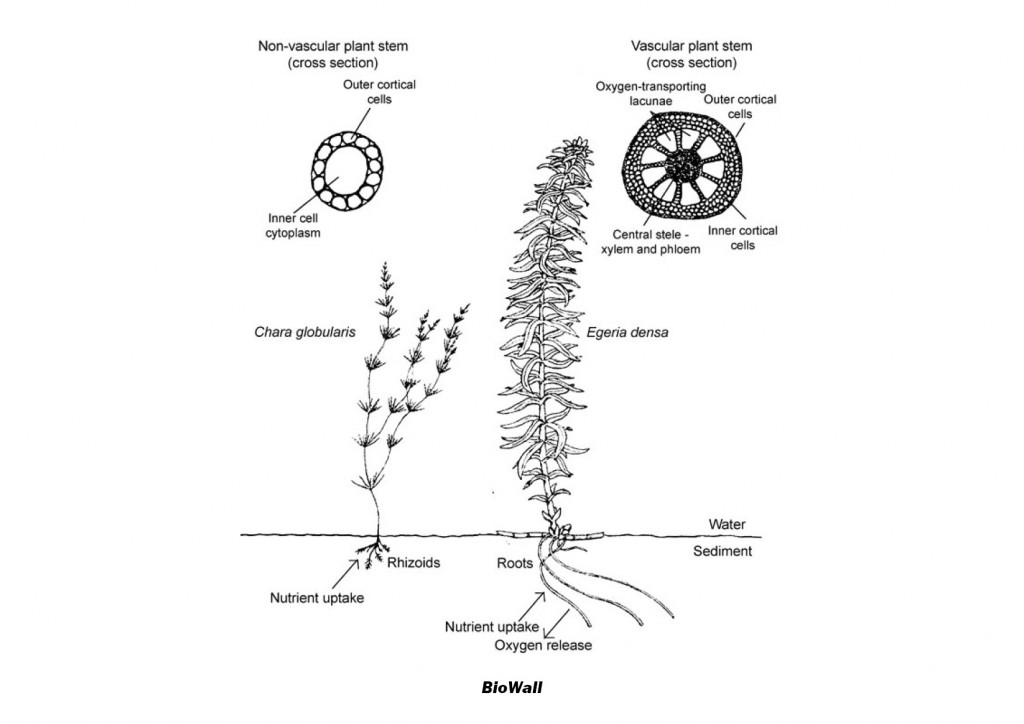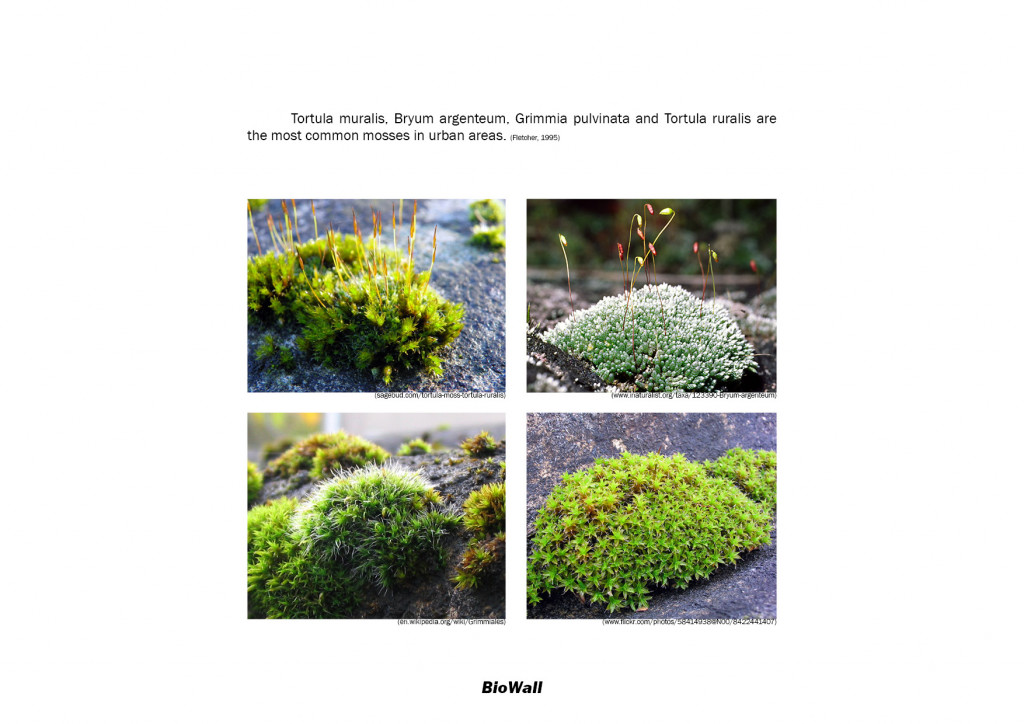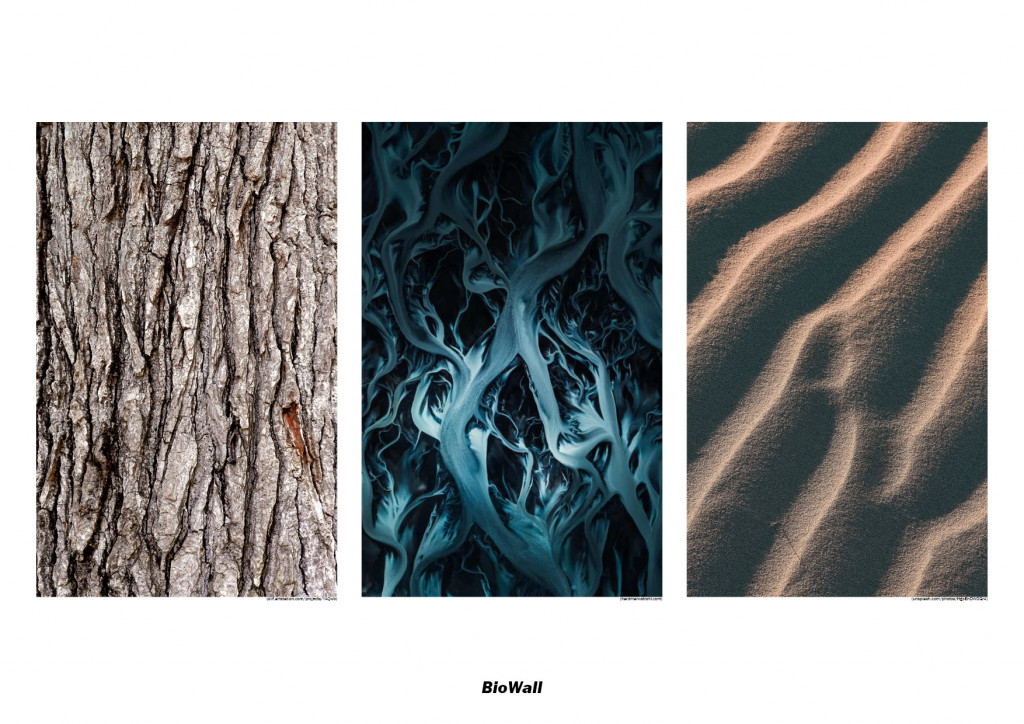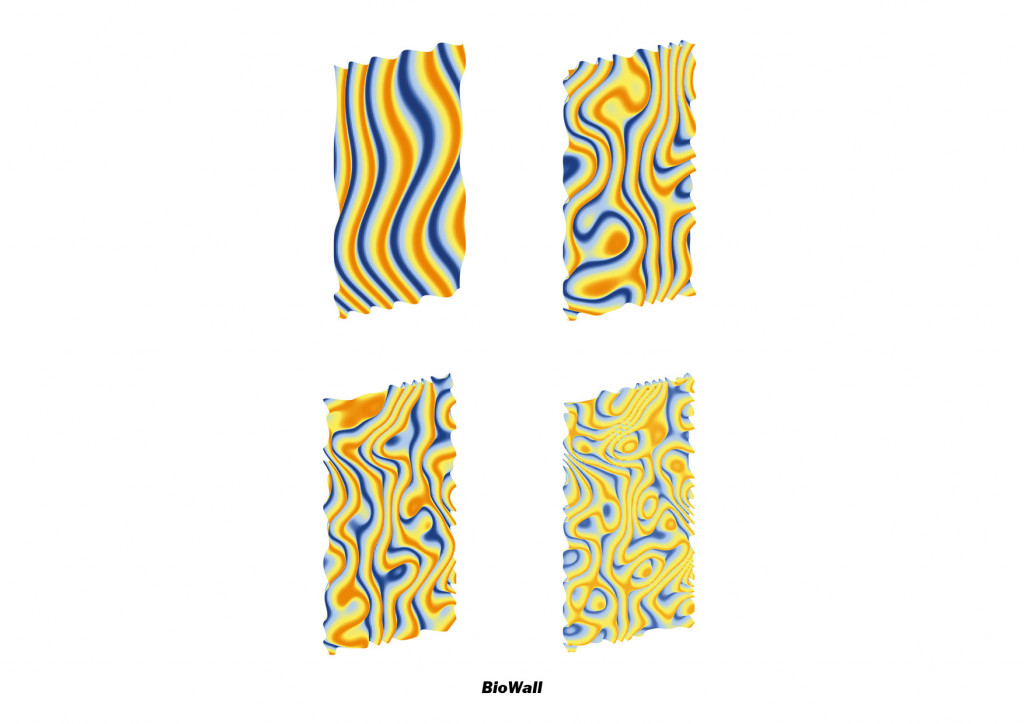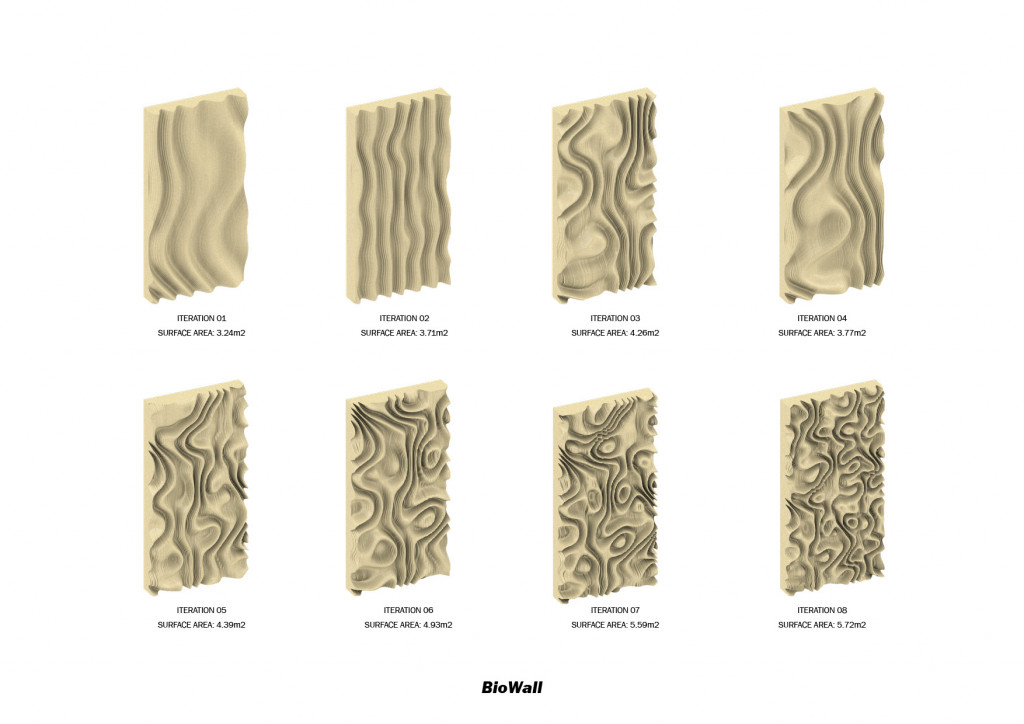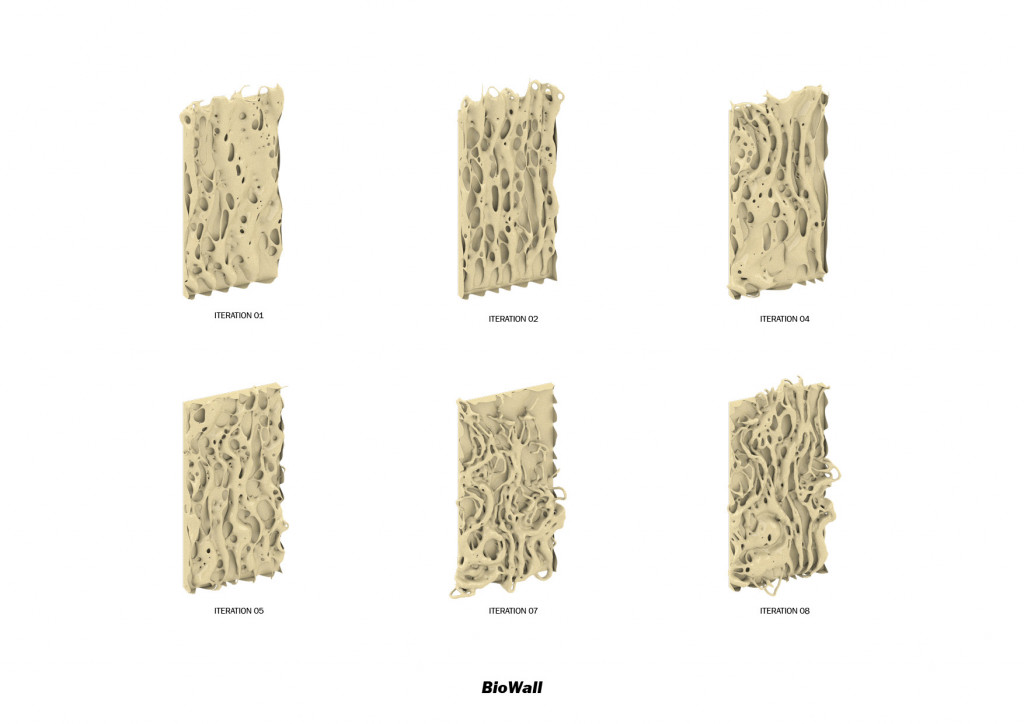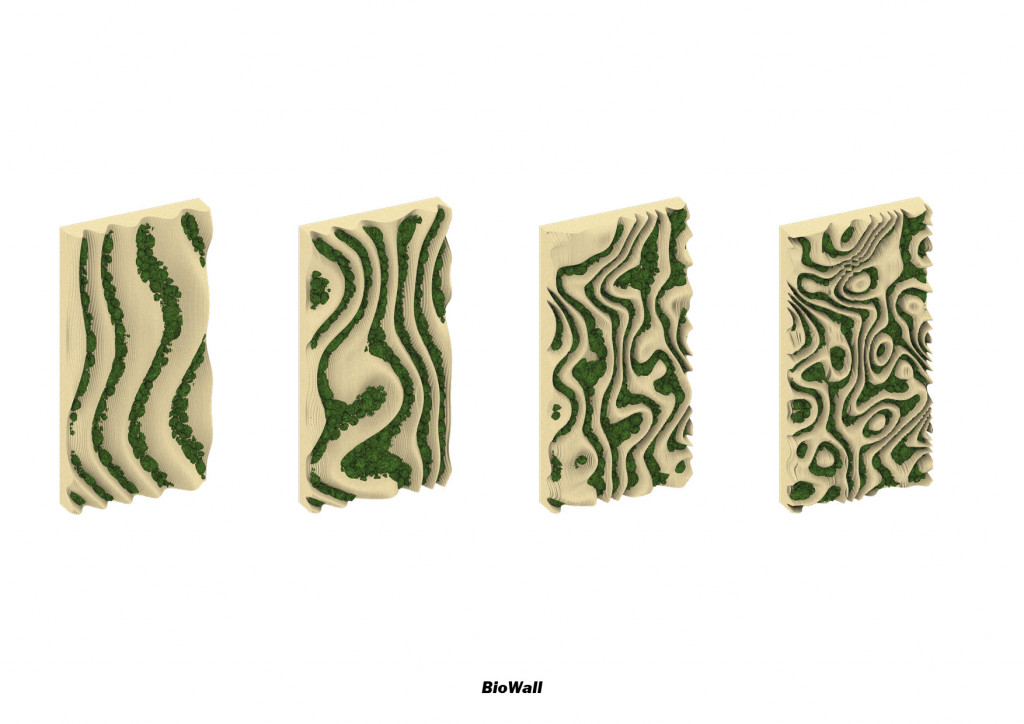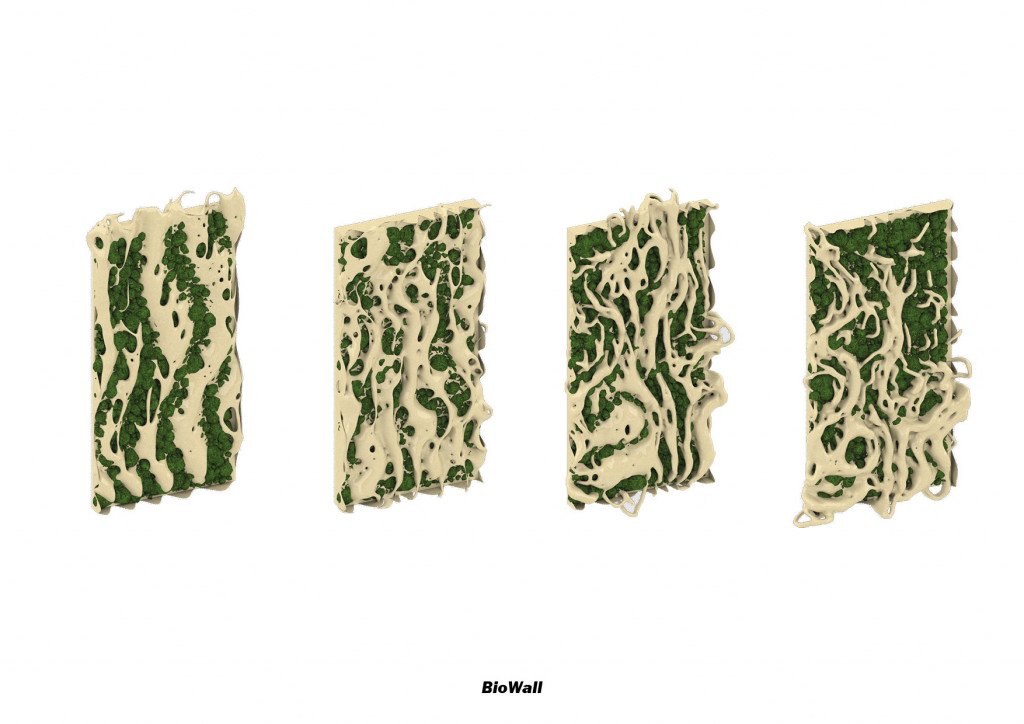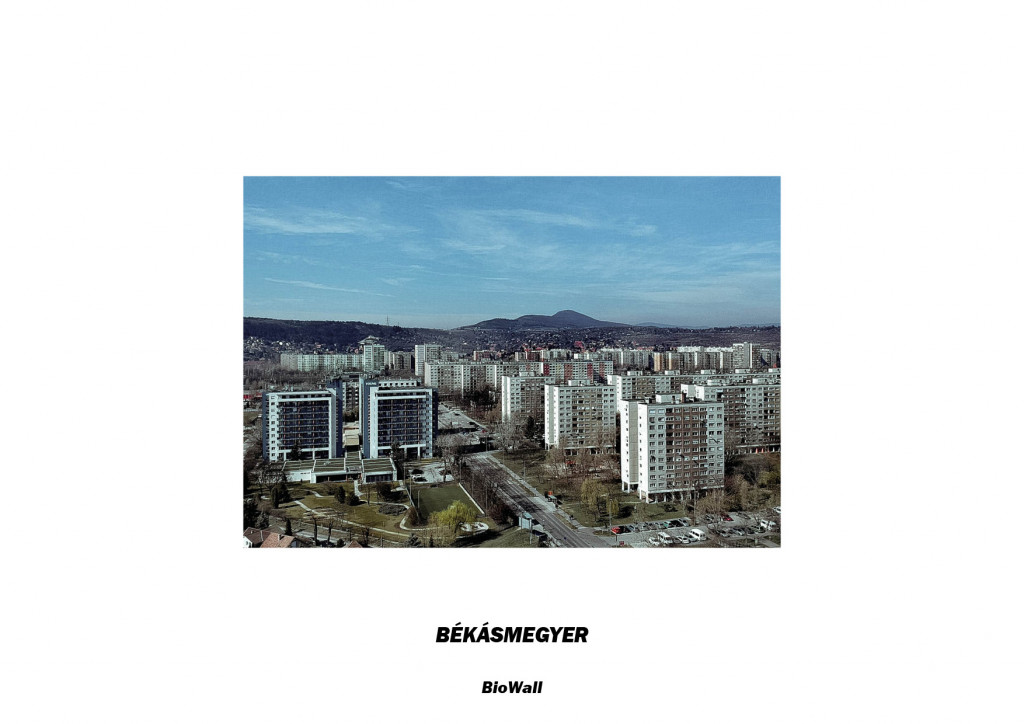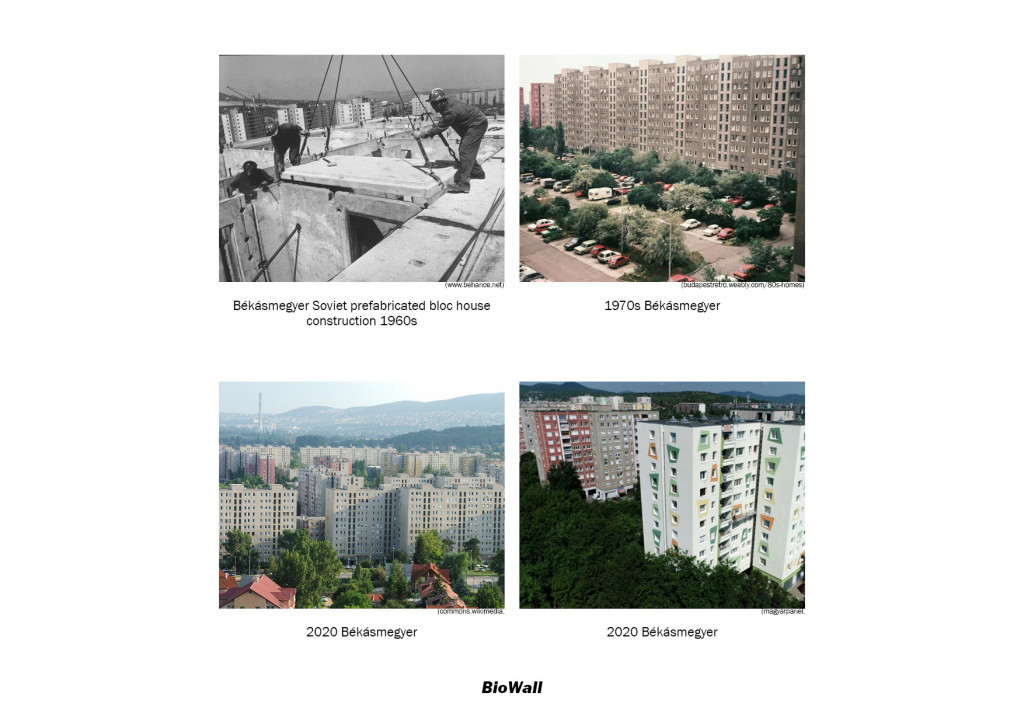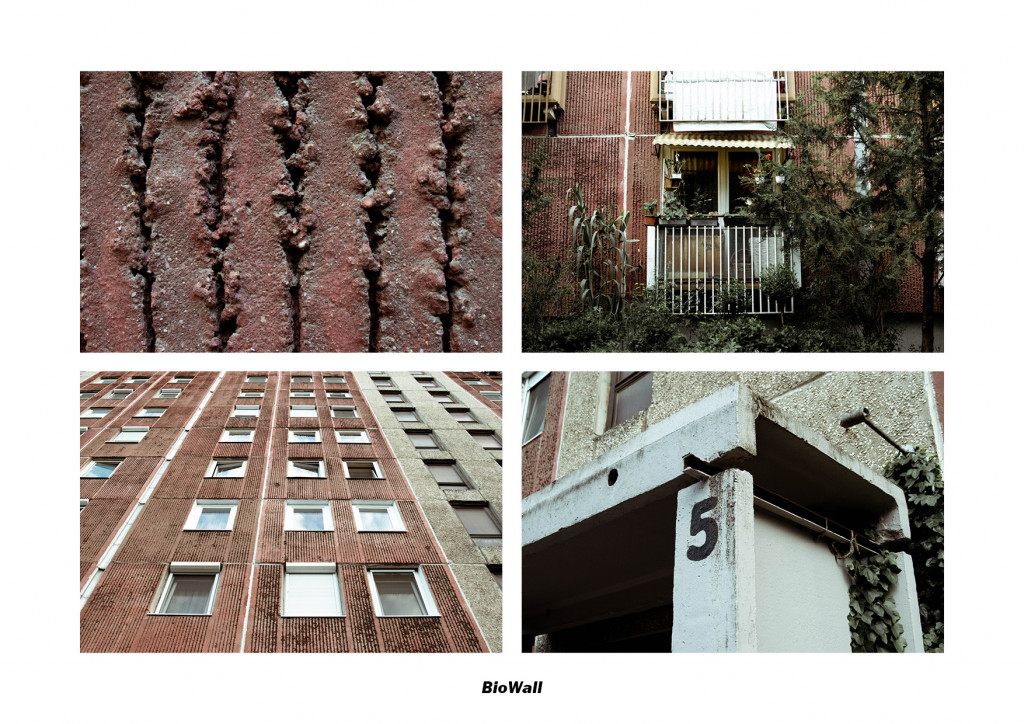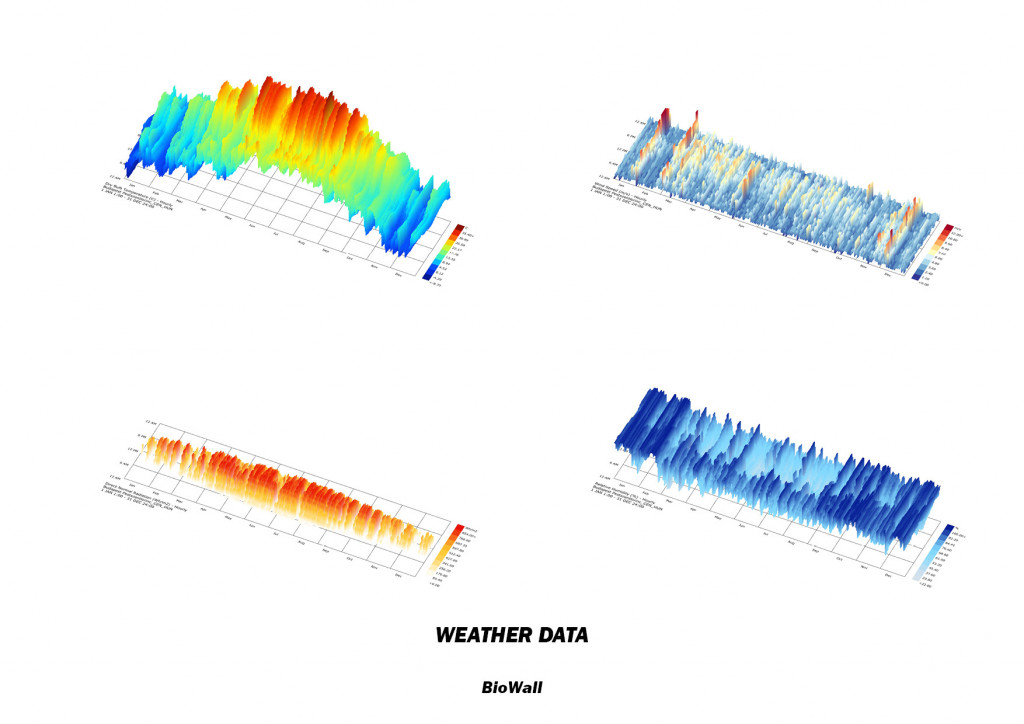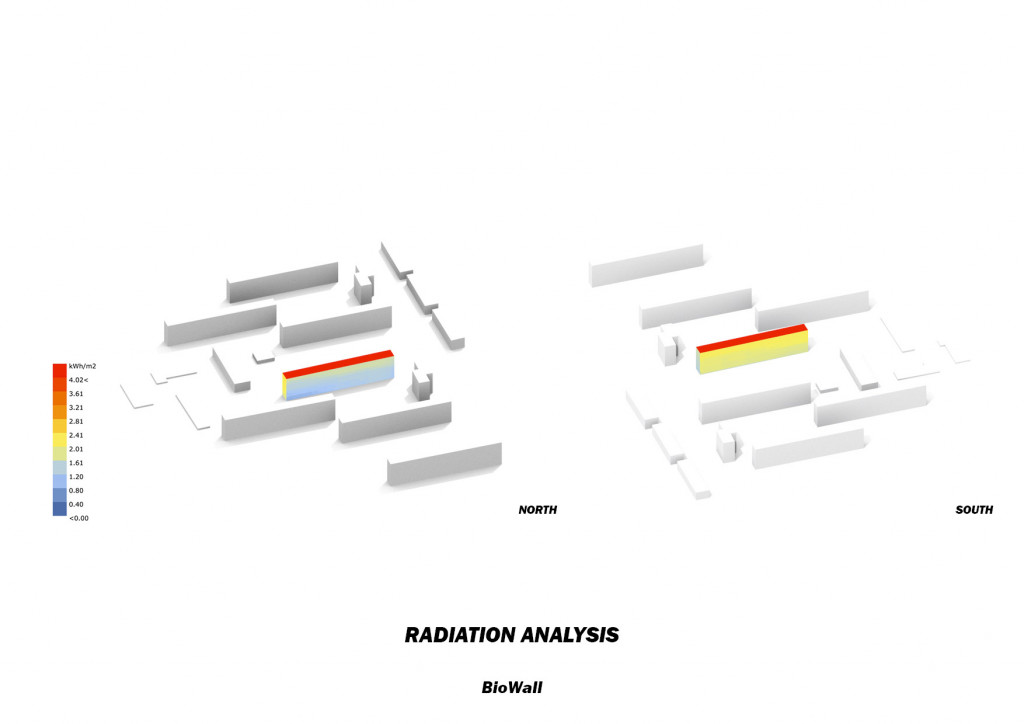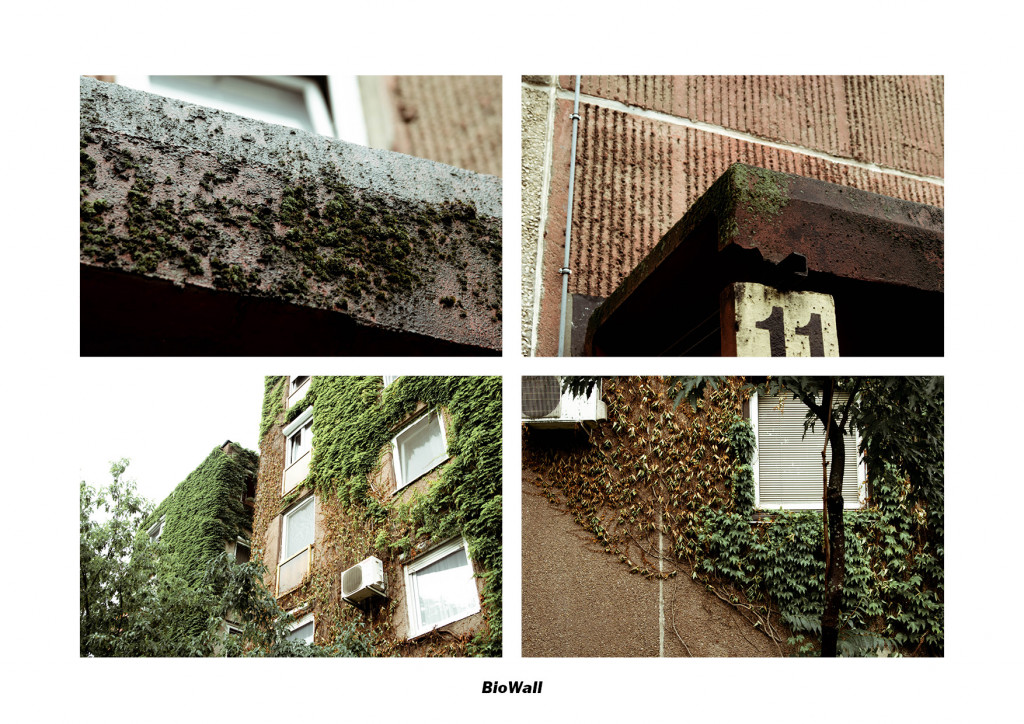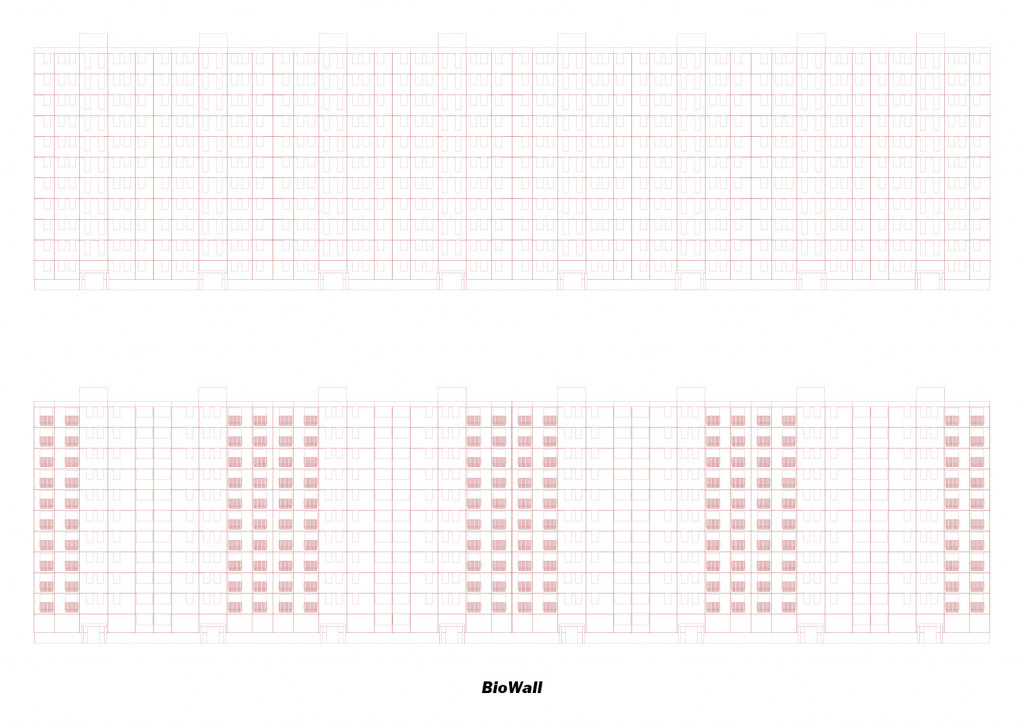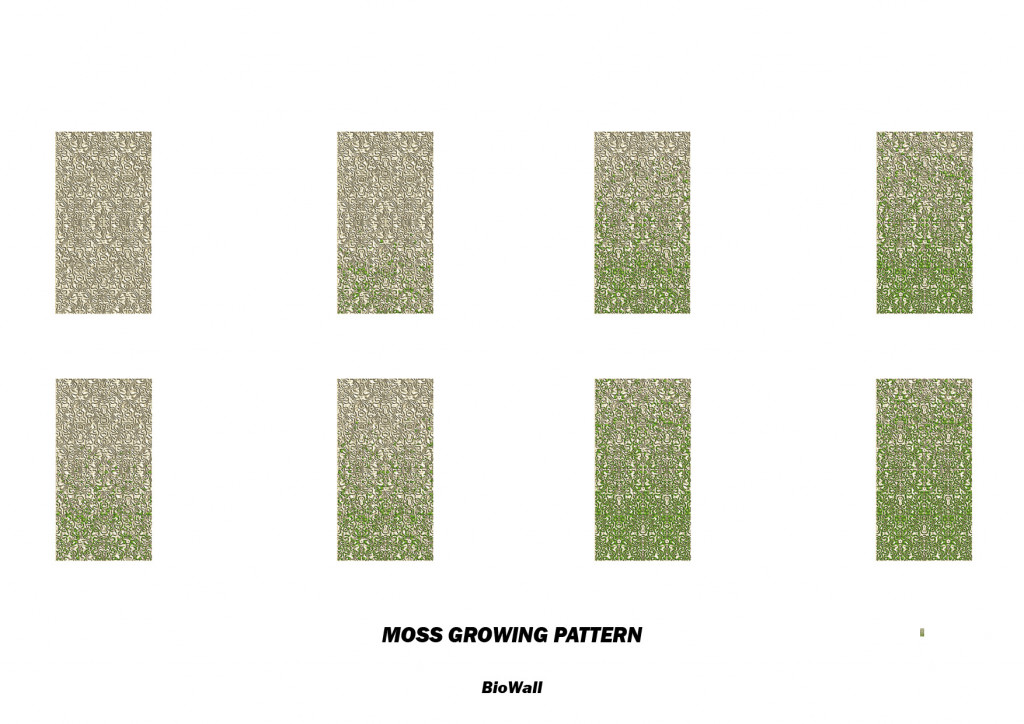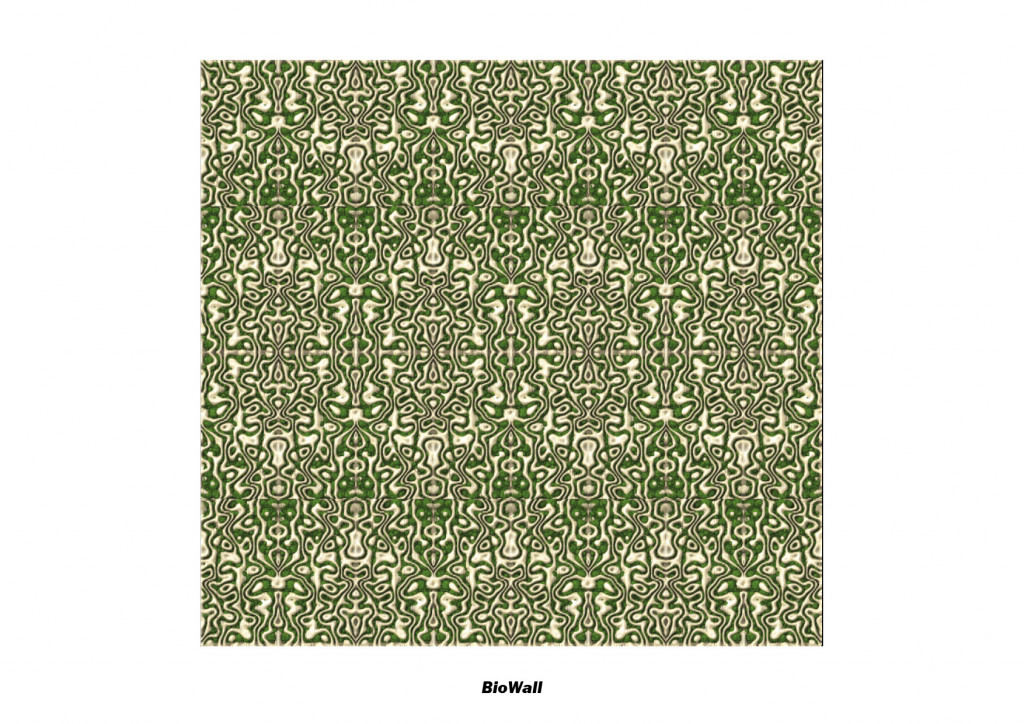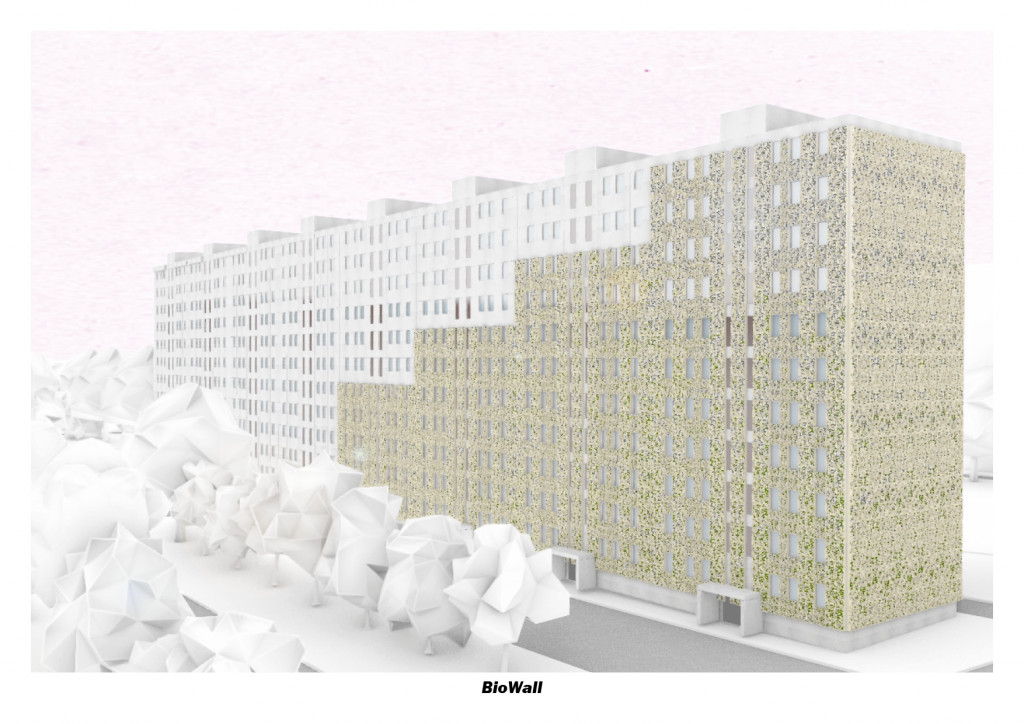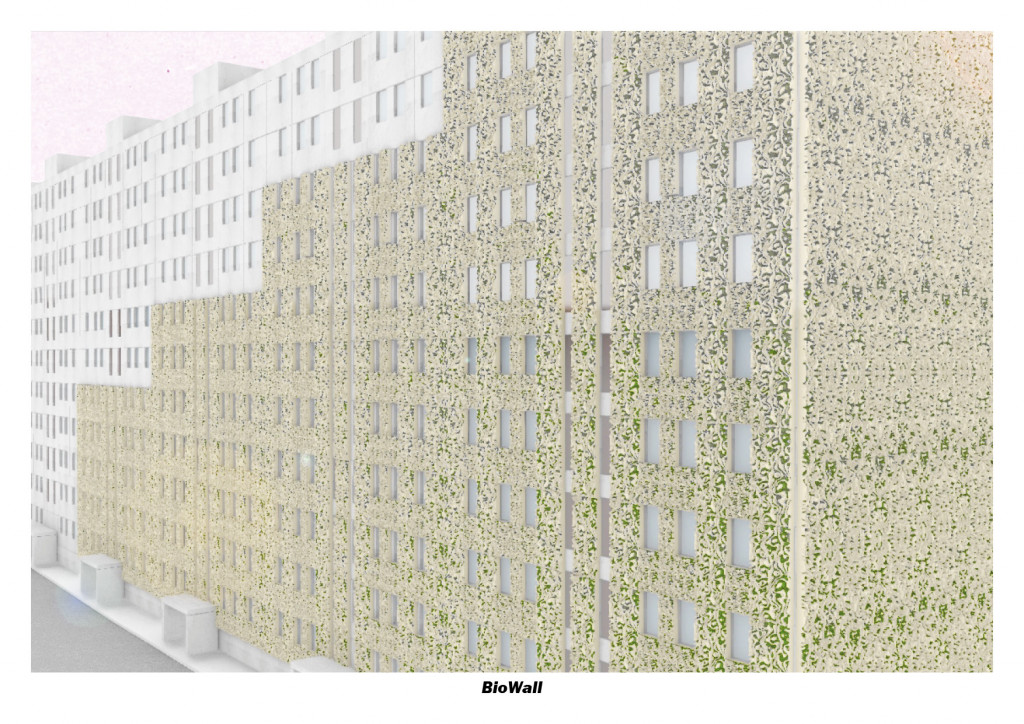BioWall is a continuation of Multiscalar Porosity research that was part of the Digital Matter course in the MAA01 course. The initial research focused on a porous, biodegradable and bio inspired material composite as a potential lightweight, sustainable construction material inspired by the structure and biology of trabecular bones. During the early phase of the research several different mixtures and techniques had been examined. The material composite that this research takes as base comprises collagen, calcium phosphate, sodium bicarbonate, sodium alginate and water.
Anthropocene, the Earth’s most recent geologic time period. Human influence left its mark on our globe. In the last centuries humanity underwent several fast and tremendous changes that have a deeply negative impact on our living environment. Urbanization triggers the need for fast and cheap construction, that involves tremendous amounts of construction and demolition waste that involves a serious amount of pollutant that results in climate change that’s consequences are already clearly visible in our time. As our cities are growing, the appearance of new buildings are crowding out nature even more, while some of our already existing structures become obsolete but still provide a potential territory for nature to claim back some of its lost habitat.
The research targets bryophytes, more precisely mosses as potential inhabitants of the panel. Mosses are nonvascular plants, they do not have roots and they are extremely durable that makes them the perfect occupants of our facades.
BioWall is a potential alternative that evaluates the relation between our built environment and nature. It is a porous, bio receptive, biocomposite facade panel, that was created on the molecular level in a way that by capillary action it can absorb and store rainwater. At the same time by its design it can slow down and direct rainwater towards the areas where moss had been planted. It provides a pleasant visual experience, while in every aspect it is sustainable and it has the potential to bring back nature into our cities.
The architectural application of the panel is demonstrated by a case study in Budapest, Hungary. Bekasmegyer is a microdistrict, that consists of multi storey, Sovjet precast concrete buildings, that are typical elements of skylight of the Eastern European countries. One the fundamental ideologies of Communism is that everyone is equal and there is no space for uniqueness. The typology of these buildings provide the perfect canvas to show a potential application of the BioWall emphasizing the contrast between the product industrialization and of human influence and a desired sustainable design that uses nature as inspiration and combines it with advanced technology in order to create a new way of coexistence between humans, buildings and nature.
KEY WORDS:
Bioreceptivity, Bioplastic, Porous, Moss, Panel, Sustainability

